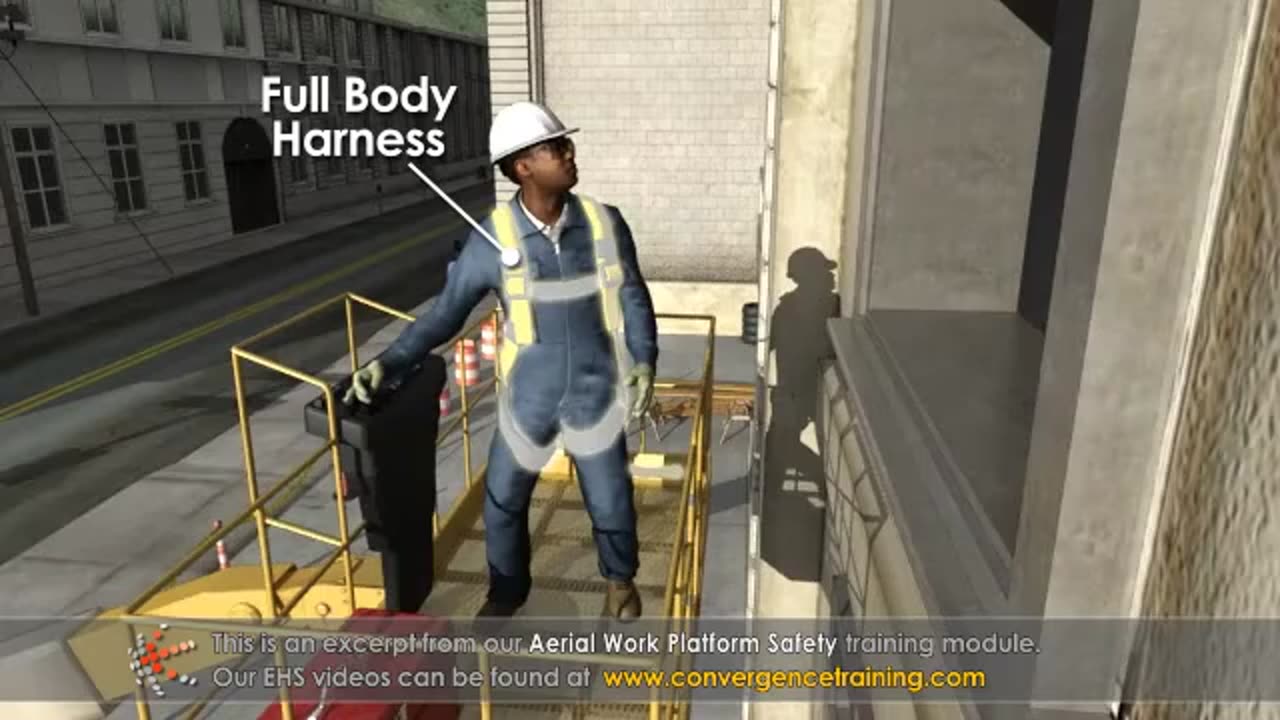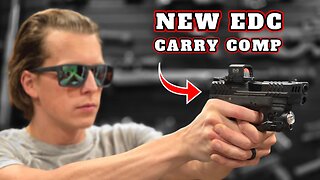Premium Only Content

Aerial Work Platform Safety Training
### **Aerial Work Platform (AWP) Safety Training Outline**
This training focuses on the safe operation of Aerial Work Platforms (AWPs), also known as Mobile Elevated Work Platforms (MEWPs), including boom lifts, scissor lifts, and vertical lifts.
---
### **1. Introduction to Aerial Work Platform Safety**
- **What are AWPs?**
- Types: Boom lifts, scissor lifts, vertical mast lifts.
- Common uses in industries.
- **Why AWP Safety is Critical?**
- Potential hazards: falls, tip-overs, electrocution, entrapment.
- Regulatory requirements (OSHA, ANSI A92.22 standards).
---
### **2. Pre-Operation Safety**
- **Training Requirements**
- Who can operate an AWP? (Authorized, trained, and certified personnel).
- Employer responsibilities for providing training.
- **Pre-Use Inspections**
- Checklist for visual and functional checks:
- Tires, brakes, outriggers, guardrails, controls, etc.
- Safety equipment (harnesses, lanyards).
- Reporting and addressing defects before use.
---
### **3. Hazard Identification and Control**
- **Environmental Hazards**
- Uneven terrain, slopes, and weather conditions.
- Proximity to power lines and overhead obstructions.
- **Operational Hazards**
- Overloading the platform.
- Improper positioning or movement of the lift.
- Unauthorized modifications.
---
### **4. Safe Operating Procedures**
- **Setting Up the AWP**
- Assessing the ground and surroundings.
- Using stabilizers and outriggers.
- Ensuring proper barricading to restrict access.
- **Working at Height**
- Wearing personal fall protection (harness and lanyard).
- Keeping tools and materials secure.
- Avoiding sudden movements or overreaching.
- **Moving the AWP**
- Ensuring the platform is lowered before movement.
- Maintaining a safe speed and direction.
- Spotter usage in crowded or tight spaces.
---
### **5. Fall Protection**
- **When Is Fall Protection Required?**
- Understanding guardrails and fall arrest systems.
- Correct usage of harnesses, lanyards, and anchor points.
- **Inspection and Maintenance**
- Checking fall protection equipment for wear and tear.
---
### **6. Emergency Procedures**
- **Rescue Plans**
- Responding to operator entrapment or lift failure.
- **Emergency Lowering**
- How to use ground controls to lower the platform.
- **Incident Reporting**
- Reporting accidents, near misses, and equipment failures.
---
### **7. Post-Operation Requirements**
- **Shutting Down the AWP**
- Properly parking and securing the equipment.
- Charging or refueling if needed.
- **Documentation**
- Logging inspections and maintenance activities.
---
### **8. Hands-On Practical Training**
- **Interactive Demonstrations**
- Performing pre-use inspections.
- Operating controls safely.
- Responding to emergency scenarios.
- **Assessment**
- Skills evaluation and operator certification.
---
### **9. Conclusion and Resources**
- Summary of key safety practices.
- Access to manuals, checklists, and training materials.
- Q&A session.
---
### Supporting Materials
Would you like:
- A **training manual** or **presentation slides**?
- **Pre-use inspection checklists**?
- **Scenarios for hands-on exercises**?
- Custom **certification tests** for operators?
Let me know how I can assist further!
-
 1:40:22
1:40:22
Game On!
13 hours ago $4.43 earnedNFL Thursday Night Football Seahawks at Bears EXPERT Picks!
33.3K9 -
 1:50:54
1:50:54
xBuRnTx
2 hours agoWho's Ready for New Years!
16.3K1 -
 12:09
12:09
Tactical Advisor
15 hours agoSmith & Wesson Shield Plus Carry Comp
19.3K1 -
 4:35:25
4:35:25
Father Russell
8 hours agoDelta Force | Not A Woman? | Mad Martigan Time
54.8K5 -
 3:29:42
3:29:42
BrookieMonster
15 hours ago $44.71 earnedChristmas Stream: Marvel Rivals with CallmeSeags 🎄
175K13 -
 LIVE
LIVE
TheSaf3Hav3n
4 days ago| RUMBLES FIRST SUBATHON IS HERE!!! | DAY 4 |
334 watching -
 6:54
6:54
Dr. Nick Zyrowski
3 hours agoHIGH PROTEIN DIET Fixes Your Metabolism! - Weight Loss Not Required
17.7K5 -
 3:14:33
3:14:33
Joe Donuts Gaming
17 hours ago🟢 Live : Christmas is Here!! | Fortnite, Caroling, Light Tours and Donos !!
94.7K15 -
 6:02:38
6:02:38
CLUJ
16 hours agoCHRISTMAS EVENING HYPE!! LETS HAVE FUN GAMING!!
73.3K7 -
![I AM FINALLY BACK :: PUBG: BATTLEGROUNDS :: RUMBLE NOW HAS GIFTED SUBS!!! [Merry Christmas] {18+}](https://1a-1791.com/video/fwe1/22/s8/1/e/f/C/6/efC6v.0kob-small-I-AM-FINALLY-BACK-PUBG-BATT.jpg) 9:57:19
9:57:19
a12cat34dog
18 hours agoI AM FINALLY BACK :: PUBG: BATTLEGROUNDS :: RUMBLE NOW HAS GIFTED SUBS!!! [Merry Christmas] {18+}
65.5K8